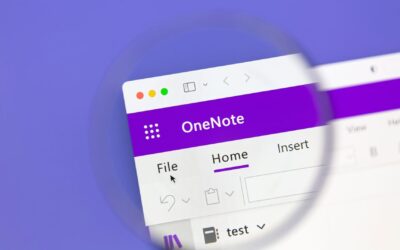Your demand for remote and onsite IT support depends on many factors.
“Support” seems like a simple concept to grasp. However, as soon as it’s combined with “IT,” businesses immediately get confused trying to understand this general term and related definitions that belong in the conversation.
Do you know the subtle differences between IT support, IT management, IT services, and third-party IT solutions? The distinctions will help you formulate an IT strategy, create a realistic budget, and manage expectations with everyone on your team. Plus, you’ll avoid awkward dust-ups with your IT provider.
You’ll also be able to cut through any jargon you encounter on MSP contracts, AKA Master Services Agreements (MSAs).
Remote vs. Onsite IT Support vs. Management vs. Services vs. Third-Party Solutions
Management is an umbrella term covering IT support, services, and the integration of third-party solutions from Cisco, Microsoft, Proofpoint, and ConnectWise Information Security. And a host of others included on the MSPs monthly invoice. (Hence the acronym “Managed Service Provider.”)
IT support is both proactive and reactive, with each classification ticketed and prioritized by decreasing magnitude of severity: P1, P2, P3, and P4.
A P1 incident threatens the entire company (server down), while a P4 event could be a user sending an email to “[email protected]” requesting a new monitor.
In SMB circles, IT support seems to disproportionately mean one thing to MSP clients and prospects: “we want you onsite at the drop of a dime, whenever the house is on fire.” (Although this mentality is less prevalent than five years ago, these talking points have not entirely disappeared.)
On the other hand, IT management and services cover a comprehensive portfolio of value-added pre-planned activities. Categories include automated patching (based on the latest virus definitions), data backup, IT consulting, budgeting, planning, procurement, project management, and vetting vendor upgrades.
These initiatives are organized and tracked within the MSP’s ticketing system. And 99% of the exercises (which loosely fit under the rubric of IT support) are conducted remotely.
Learn More: Remote & Onsite Support Examples
Remote vs. Onsite IT Support and The Cloud for SMBs
When most of your assets reside in business-grade clouds, most of your IT support will be remote. This outcome is by design and results from taking advantage of the IT management and services described above.
Especially the strategy piece (if it was absent from your previous MSP relationship). When a company follows a plan informed by a budget, its IT stack is more fault-tolerant.
This state is ideal for the client and the MSP because both entities can focus on core operating activities instead of suffering continuous remediation exercises.
Most of the SMB clients we’ve encountered over the last ten years have been at the beginning and middle phases of their cloud journey.
The beginners required frequent visits, while the intermediates required occasional visits.
No company is at the end. Transformation is constant, especially for the innovators.
Your demand for site visits depends on several factors:
- Company size
- Number of locations
- Merger and acquisition activity
- Your office versus work from home (WFH) footprint
- The complexity of your IT systems
- How you define applications and infrastructure
- The presence of lingering legacy applications
- The age and condition of infrastructure: devices like servers, backup appliances, switches, firewalls, WAPs, Low-Voltage, Internet access, and more
- The technical competency and mindset of various user groups (segmented by age, job function, VIP status, applications, and infrastructure)
- The presence of in-house IT and their area of expertise
Learn More: Remote & Onsite IT Support Factors
Remote vs. Onsite IT Support and Access to the Cloud
Even if you don’t select onsite support, by default, many MSPs will include onsite support for foundational network devices and will show up onsite when needed without extra fees.
When most of your environment consists of the Microsoft cloud and several SaaS apps, your local area network and Internet services should provide 99.999% (Five 9s) uptime.
(No ISP can guarantee 100% uptime. Five 9s means you might experience five or six minutes of hiccups per year unless you have a secondary Internet connection that automatically fails over when the primary ISP is compromised.)
If your firewall crashes in the middle of the night (and by default, your Internet, too), wouldn’t it be nice for your IT provider to immediately begin working on it? Be sure to read the fine print in your MSA to ensure this is available.
Periodic onsite discovery is an integral part of your MSP engagement. The long-term strategy is to modernize endpoints that fail and avoid the peaks and valleys in your quality of service (QoS).
First on the list are infrastructure devices that can’t be managed remotely and require an onsite intervention.
While most MSPs use remote asset discovery and reporting tools, every infrastructure device and its environment can use a set of eyeballs. What use is a new backup device when it sits on a floor of an IT closet in an office building with a history of flooding?
Learn More: The 4 Leading Drivers of Responsive IT Service
What’s Next?
Most MSPs give you a variety of IT support options: unlimited remote and onsite support, remote-only support, and remote with the option to pay a la carte for onsite support on an as-needed basis.
You can usually upgrade and downgrade without contract penalties.
Will your MSP collaborate with you to figure out the best balance of both? It’s worth exploring. Who knows, you might save money or discover a solution that requires less support.
Learn More: How to Reduce IT Support Costs



